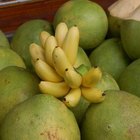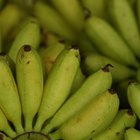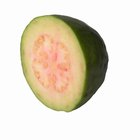
The orange fruit is an ancient citrus hybrid of a pomelo and a tangerine, cultivated originally in Southeast Asia. The fruit comes from a small tree that flowers and features evergreen leaves. The tree itself grows to approximately 32 feet tall and is found mostly in subtropical climates. The original name for the orange is believed to descend from the term "Chinese apple."
Considerations
The orange fruit belongs to a single genus known as Citrus. The majority of the different species in this genus are interbreedable. This can include grapefruits, limes, lemons and oranges. Each of these fruits are berries that contain many seeds.
Types
There are four different types of orange fruit. The Persian orange is found in southern Europe and is available in a number of colors and sizes. Naval oranges are a mutation that breeds sterile fruit with no seeds. The Valencia orange is used for juicing and is very sweet. The blood orange is dark burgundy and used heavily in marmalade.
Features
The orange fruit is one of the most acidic of all seed-bearing plants. The pH level is between 2.5 and 3, depending on the variety. This makes the orange as strong in acid as vinegar.
Size
Oranges are one of the largest commercially-grown fruits in the world. The top countries that produce the fruit are Mexico, the United States and Brazil. As of 2009 figures, nearly 105 million tons of the berry are produced each year.
History
Although it is unknown exactly when production of the fruit began, evidence shows that southeast Asia began producing oranges by at least 4000 B.C. It then spread to Africa and eventually made its way to the Roman Empire by 200 B.C. It was brought worldwide by Spanish explorers in the 1500s.
Related Articles

Types of Greek Fruits & Vegetables

Foods From Rainforest Plants

Different Names for an Eggplant

Is an Orange Healthy to Eat for Your ...

List of Tropical Fruits

Fruits or Vegetables Starting With X

Difference Between Clover & Orange ...

How to Make a Lime Peel Garnish

Different Types of Fruits & Vegetables

Can You Eat the Green Stem of a ...

How to Keep Pomegranate Fresh

What Fruit Has the Most Fiber?

The History of Butternut Squash

Kiwis vs. Oranges

How to Make a Fruit Reduction

Calories in an Ambrosia Apple

Fuji Apples Health Benefits

Why Does Lemon Juice Stop Apples From ...

How to Peel Guava

How Are Strawberries Processed?
Writer Bio
Jason Chavis has been a professional freelance writer since 1998. He is the author of four books, two movies and a play as well as numerous articles for "Scientific American," The History Channel, City Pages and "The Onion." In 1996, Chavis won the award for "best science fiction/fantasy" from the River Valley Writer’s Conference.
Photo Credits
Allen Timothy Chang, Wikimedia Commons, GNU Free Documentation License, http://en.wikipedia.org/wiki/File:Navel_orange_sectioned.jpg